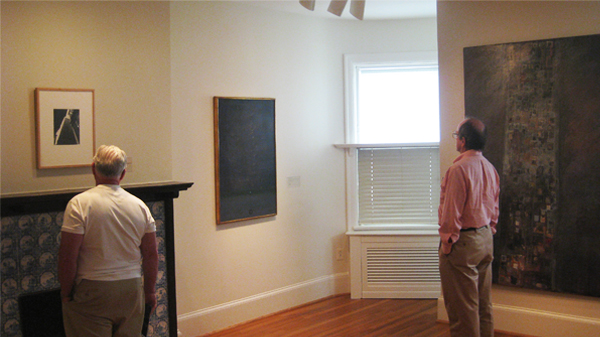A fresh suite of artworks quietly debuted earlier this month in a small gallery, on the second floor of the House. As hallmark pieces of the museum’s American art collection shipped off to Tokyo for To See as Artists See: American Art from The Phillips Collection, and with the 10th anniversary of 9/11 in mind, Installations Manager Bill Koberg thought to fill the space with a few choice pieces of New York abstraction from the 1930s-50s.
Gandy Brodie’s undated painting Fragment of a City (1957) anchors the East side of the room, opposite Loren MacIver’s New York (1952). A subtler MacIver, The Window Shade (1948) and Berenice Abbott’s modern consideration of the city as landscape Canyon: Broadway and Exchange Place (1936) hang on the North wall across from Aaron Siskind’s photograph New York 6 (1951) and Ralph Flint’s undated colored pencil drawing Metropolis (undated), acquired by the Collection in 1931. The Flint work brings with it some mystery — unframed prior to its recent hanging, Koberg is uncertain if it’s ever graced the walls of the Phillips. Continue reading



